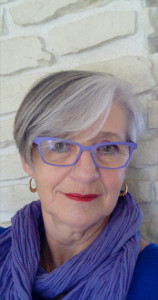
La cosa mentale* of Moninot

Not everyone likes to consider a work of art as a work of the mind.
Connaissance des Arts is aware of this, resigned, even consenting. We are warned from the very first lines of a fine article on Bernard Moninot that his sculptural art might not be to his liking. To whom? Those of its readers who suffer from an allergy to the intellectualisation of art!
It should be noted that this same magazine never warns us that a work of purely plastic interest risks repelling those of us who, on the contrary, are allergic to any form of art that presents a flat encephalogram. What about parity?
It is true that in the Editorial of this July issue, Connaissances des Arts greedily declares that it hopes for a post-Covid artistic boom revealing a creativity "more oriented towards social and environmental issues". If we see things this way, everything becomes simple, even simplistic. Why should art think its works if critics expect it to express a ready-made activist thought about the world instead? For its own sake.
To seek to give form to the spirit is nevertheless a magnificent challenge. We are therefore pleased to read in the same title that Moninot's sculpture presents the rare interest of inventing "gestures and devices to track down the intelligible and attempt to represent invisible phenomena". Like, for example, the challenge of drawing the wind by transcribing the trace of its wake on a film of lampblack coating the inside walls of Petri dishes placed in deserted or uninhabited natural sites.
One understands, in view of this series poetically entitled Mémoire du vent, that Moninot's art invites one to quote Einstein and Duchamp in the same sentence. Vinci and his codices combined with Brunelleschi and his mathematical perspective. It is true that Moninot's sculpture requires a real physical science of installation. It is his trademark, his DNA. The spirit of the drawings of light in the space of the "sculpture" Mémoire du vent is also at work in the quasi-Calderian mobile entitled Point de rosée, which mixes wood, plaster, nylon thread and glass drops to show not the image of a natural phenomenon but the phenomenon itself.
Also mentioned in this article is the installation Chambre d'écho, in which 'sound objects' such as revolving doors, loudspeakers and pulleys are presented in a box within a box that visitors are invited to enter. Just as one would enter a sound. And more precisely into a mountain echo evoked in a "very Duchampian" way, as the journalist Élisabeth Védrenne very finely puts it.
It is in fact the very question of the representation of the world through art that Bruno Moninot's work raises. He does not make it an object to be shown but a phenomenon to be seen. An object captured in its movement or in the balance of forces producing its static state. And what if this was the mission of art? And of sculpture in particular. Unlike painting, it does not risk flattening reality. Because the idea here is not to offer the illusion that we dominate and master our environment. And that there is nothing to dig out. Moninot's artistic project is much more about inviting us to immerse ourselves in the entire universe and lose ourselves in it. To better grasp its secret structure. To grasp intellectually what is physically elusive. According to Moninot, sculpture is the divinatory art of seeing the invisible.
* Art seen as a mental thing (Vinci)
Illustration : Bernard Moninot - La Mémoire du vent - 1999 - 2019





































































